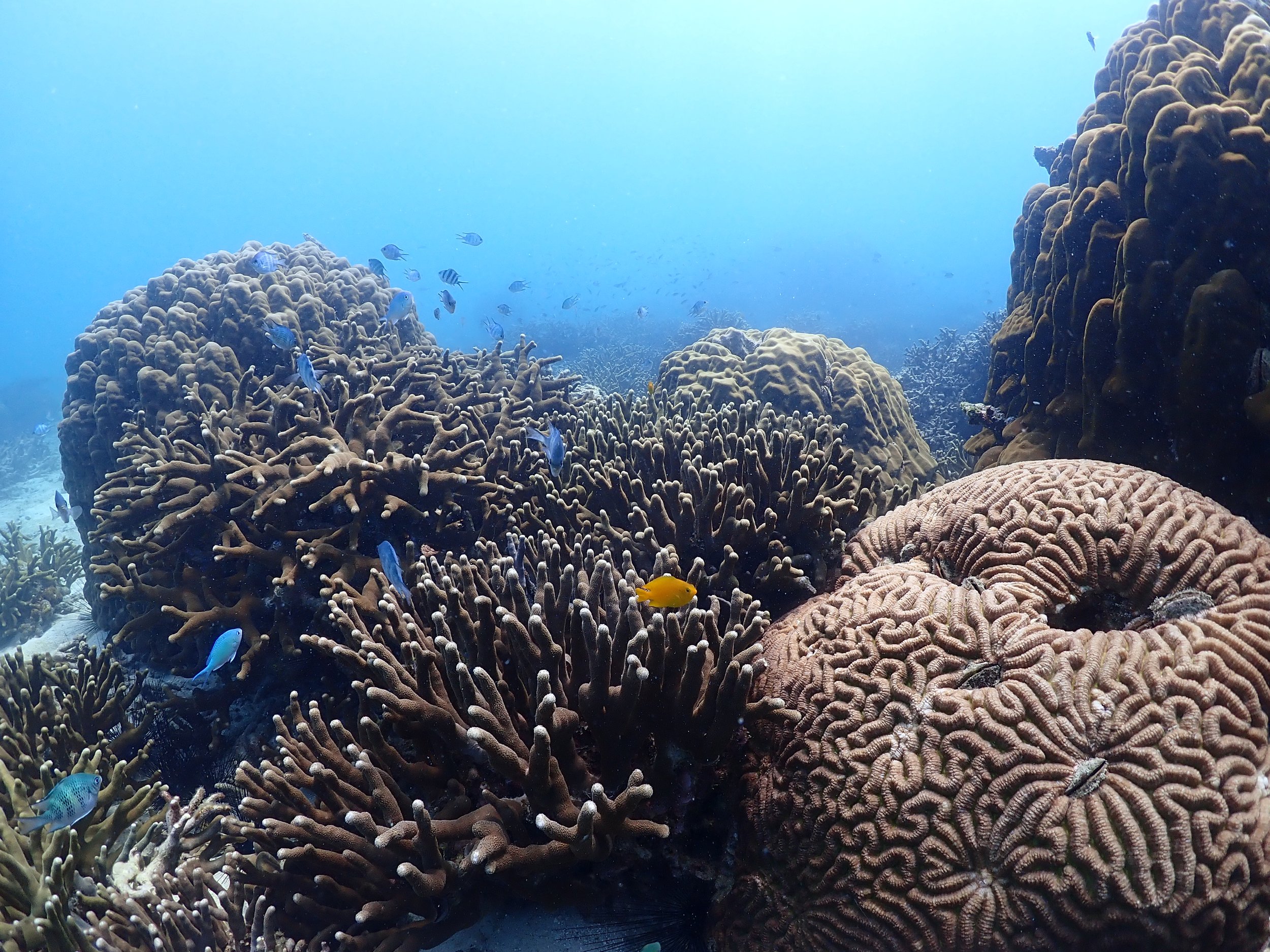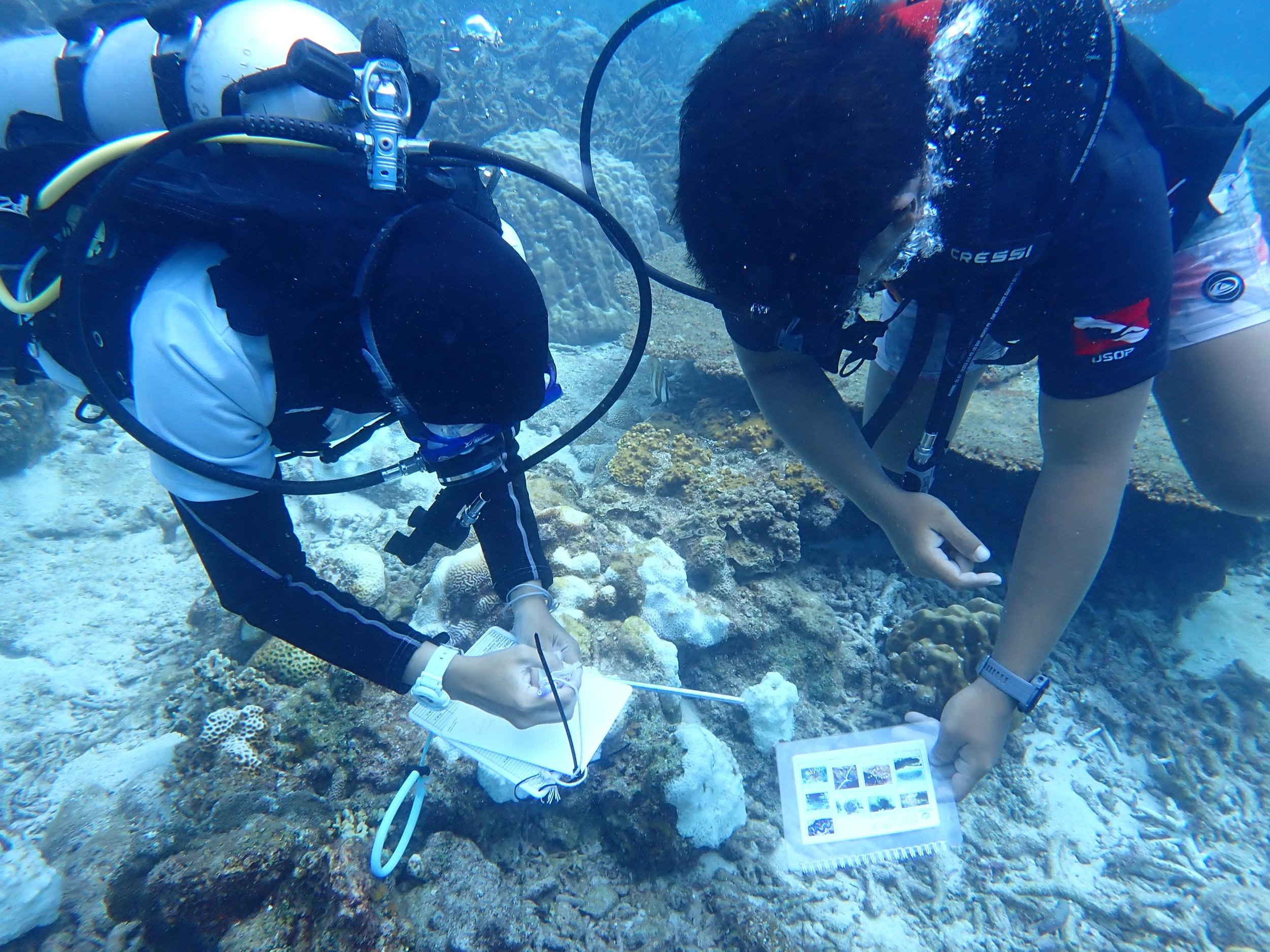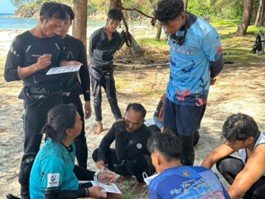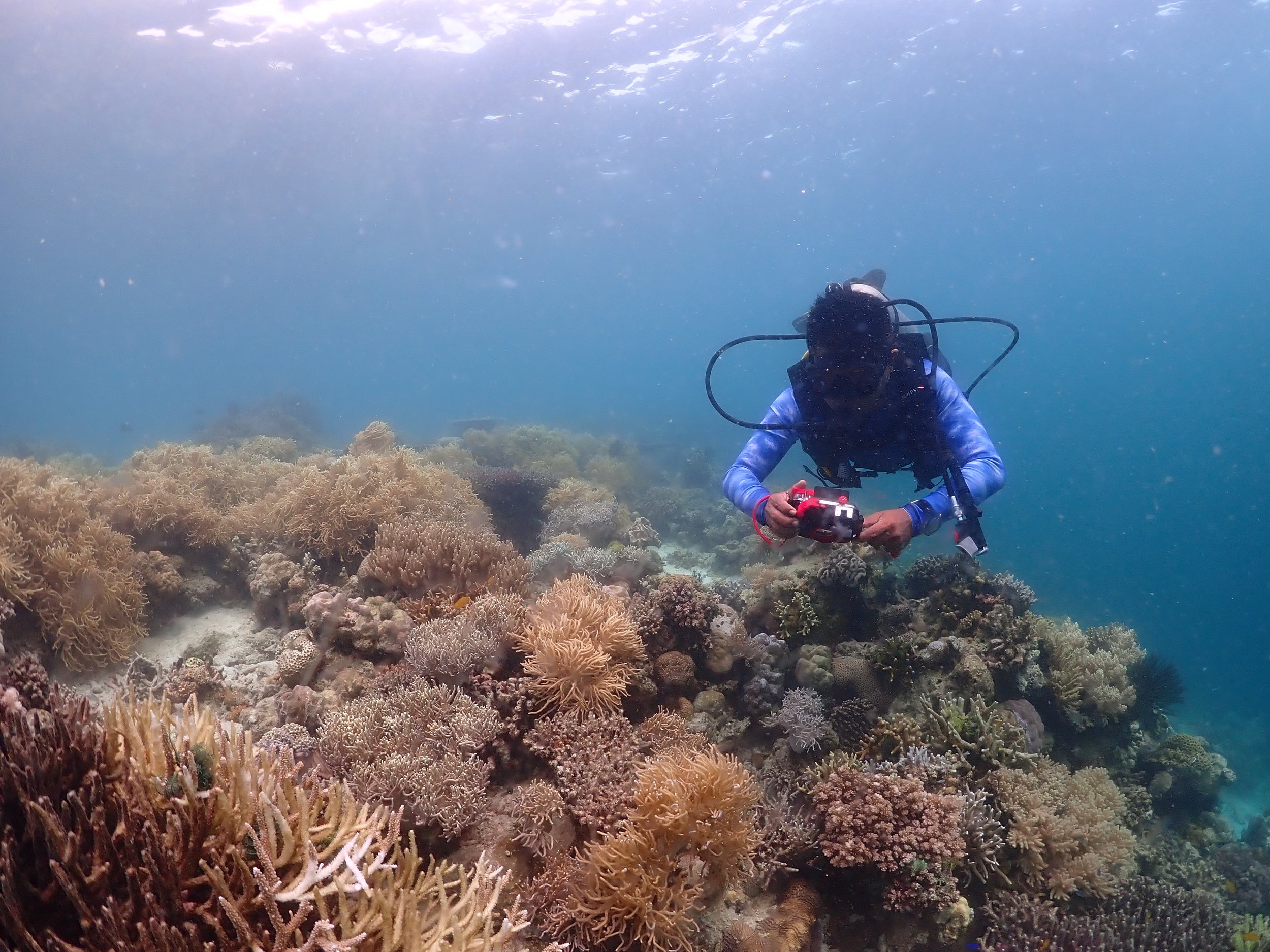Skills Training to Contribute to Marine Conservation Activities
In July and August, 7 members of the Redang Marine Conservation Group (RMCG) completed their training and are now certified EcoDivers. The training was conducted in three sessions at DM Scuba Dive Centre and RCM Redang office. The training included components such as classroom learning and mock surveys (Fish ID, Invertebrate ID and Substrate ID). To date, 12 RMCG members have been trained as EcoDivers and they help conduct surveys in and around Redang Island.
Asma with a trainee EcoDiver during a mock survey
In September, RMCG representatives went to Pulau Lang Tengah to train 3 members of the Pulihara team as EcoDivers. All 3 trainees successfully completed the course and passed the exam. They are now ready to contribute their effort and knowledge in collecting coral reef health data in Pulau Lang Tengah.
Marine awareness programs catches interest of younger generation
In mid-August, RCM staff, Asma and Muhaimin conducted several educational and awareness programs for the local kids of Redang Island. We had an interactive session with 15 kindergarten kids, teaching them about coral reefs and marine life, followed by some videos and a quiz. A similar program was held for students aged 9-12, where they were taught about hard and soft corals. 12 of these students were then brought out to the sea for a snorkelling session with RMCG members, to identify these corals.
During the outdoor waste management awareness activity, participants aged 9-12 years old were brought on a jungle trekking trip while picking up rubbish from Teluk Dalam to Long Beach. They also had the opportunity to visit the waste machine in Long Beach and were briefed on the waste management efforts in Redang.
We also conducted an awareness session on ‘Recycling” at Balairaya Kampung Pulau Redang, attended by 14 students, during which they were briefed on the process of recycling and ways to reduce the production of trash.
Engaging Stakeholders: Partnerships in Action
Our RCM team from Redang attended the Majlis Perasmian Eco-Schools Terengganu, which was held in conjunction with Word Nature Convention Day. Eco-Schools Terengganu is funded by Yayasan Petronas and other agencies, including the Ministry of Education and the Terengganu State Education Department. The event provided a platform for Reef Check Malaysia to showcase the coral reef conservation we have been carrying out, and to share knowledge and experiences while educating the public about the importance of preserving our marine ecosystems.
Muhaimin and Asma at the 'Majlis Perasmian Eco Schools'
In September, RMCG representatives conducted a site visit to Pulau Rhu for the final steps of Pulau Rhu gazettement as state park, which includes the component of establishing the boundary line in Pulau Rhu waters. The visit also involved representative from JUPEM, Majlis Daerah Besut, and Terengganu State Park.
protecting our reefs: tracking and monitoring efforts
Our team has been working hard to complete the annual Reef Check surveys around Redang. In early of July, a team led by our Redang colleagues and 4 EcoDivers successfully completed surveys at 6 sites in Tenggol Island. A few weeks later, members of RMCG, TMCG and a few EcoDivers surveyed 12 sites around redang, during which they noticed that the number of sites affected by bleaching were still high. In early August, RMCG members together with volunteers conducted surveys at 6 sites around Bidong and Yu Island.
Our RMCG team also conducted biodiversity monitoring in 12 sites which across 5 islands, namely Redang, Bidong, Geluk, Bara and Lang Tengah. The surveys that were conducted by RMCG took 4 days, during which we gathered information on the biodiversity of the sites to help us understand its current situation.
Meanwhile, the coral bleaching monitoring survey conducted by the RMCG team indicates thus far that that coral bleaching in Redang is still at a severe phase.
We have also regularly monitored our reef rehabilitation sites, to collect data on their survival and growth rate. While monitoring, we also maintained the sites by brushing off algae to reduce stress to our coral fragments. We have not planted any additional corals due to the restriction of activities during the coral bleaching episodes.








































































































